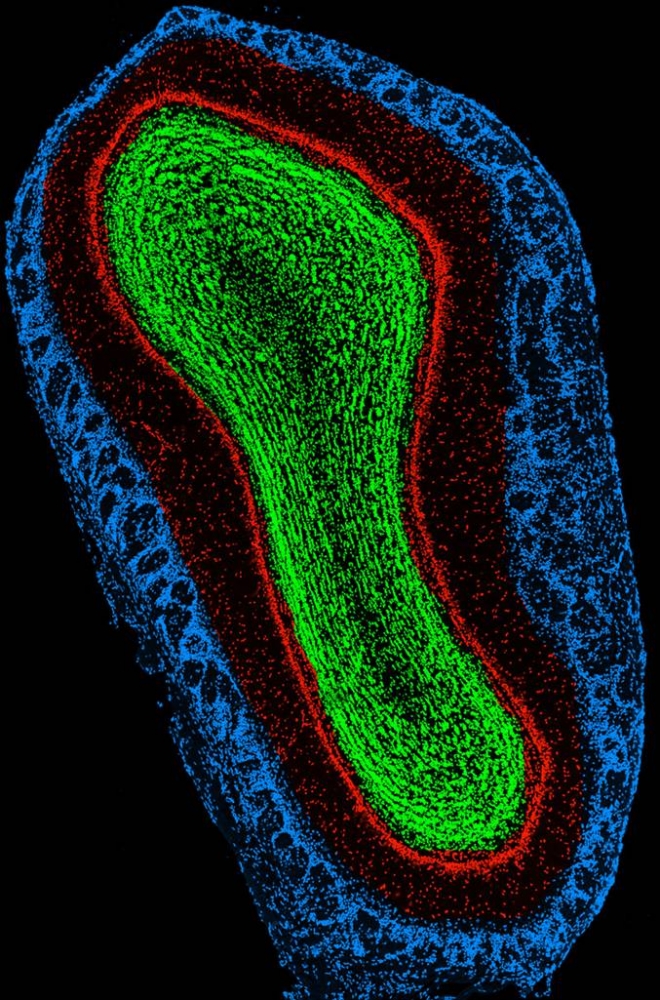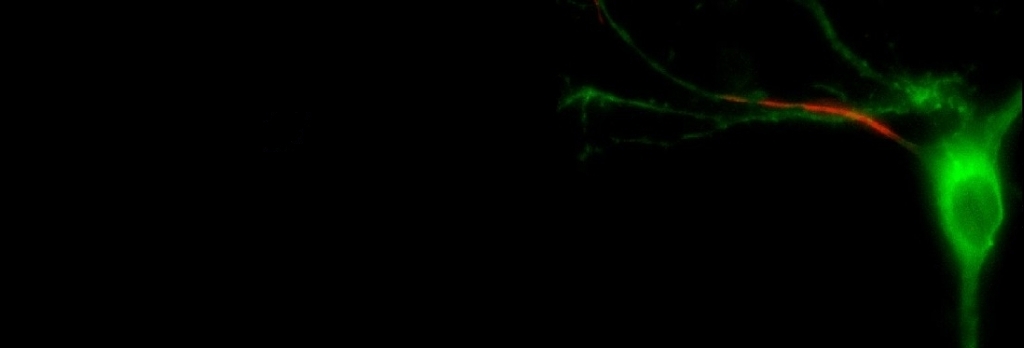Our lab focuses on neuronal
activity and the way in which it shapes brain maturation. We’re particularly interested in two
inter-connected processes:
1) Activity-dependent plasticity at the axon initial segment (AIS). In neurons, the axon
initial segment is a highly specialised structure near the start of the axon
that is crucial for controlling action potential initiation and axonal identity
( Grubb & Burrone 2010 Curr Opin Neurobiol 20:481-1). We have recently uncovered evidence for a
surprising amount of plasticity at the AIS: in dissociated hippocampal cultures in vitro, chronic increases in electrical activity produce a shift in
AIS location, with the entire structure relocating up to 17 µm distally away from the soma.
This shift is reversible upon return to control conditions, depends upon
activation of T- and/or L-type calcium channels, and is associated with
significant alterations in neuronal excitability ( Grubb & Burrone 2010 Nature
465:1070). Work in the near future will
focus on the mechanisms of this activity-dependent AIS relocation – how exactly
does an entire subcellular structure move forwards and backwards along the
axon? We are also interested in the
functional consequences of activity-dependent AIS relocation, and are working
on a range of models to establish whether similar AIS plasticity exists in
vivo.
Axon initial segment labelling
2) Activity-dependent maturation of olfactory bulb interneurons in
development and adult neurogenesis. 
The olfactory bulb (OB) is the first region of the brain to process smell information
arriving from the nose, and is also a fantastic model system for studying
activity-dependent neuronal maturation.
Not only are OB circuits set up in an activity-dependent manner during
early postnatal development, they are also continually altered throughout life
as a consequence of ongoing adult neurogenesis, in which neuroblasts born from
adult stem cells in the subventricular zone migrate to the OB and establish
themselves as fully-functioning interneurons ( Lledo, Alonso & Grubb 2006 Nat
Rev Neurosci, 7:179). We plan to use in vitro and in vivo approaches to study activity-dependent
maturation in these newborn OB interneurons, both in development and in adult
neurogenesis. We'll draw on existing
expertise in manipulating neuronal activity with genetic tools such as
channelrhodopsin ( Grubb & Burrone 2010 Nature 465:1070; Grossman,
Poher, Grubb et al. 2010 J Neural Eng, 7:16004), combined with measures
of maturation including electrophysiological recordings ( Grubb et al. 2008 J
Neurosci, 28:2919), to investigate the activity codes shaping the
integration of newborn OB interneurons into fully-functioning circuits. An initial focus, in an attempt to bring
together both main research strands in the lab, will be on AIS maturation in
these cells.
Cross section of the olfactory bulb
| 